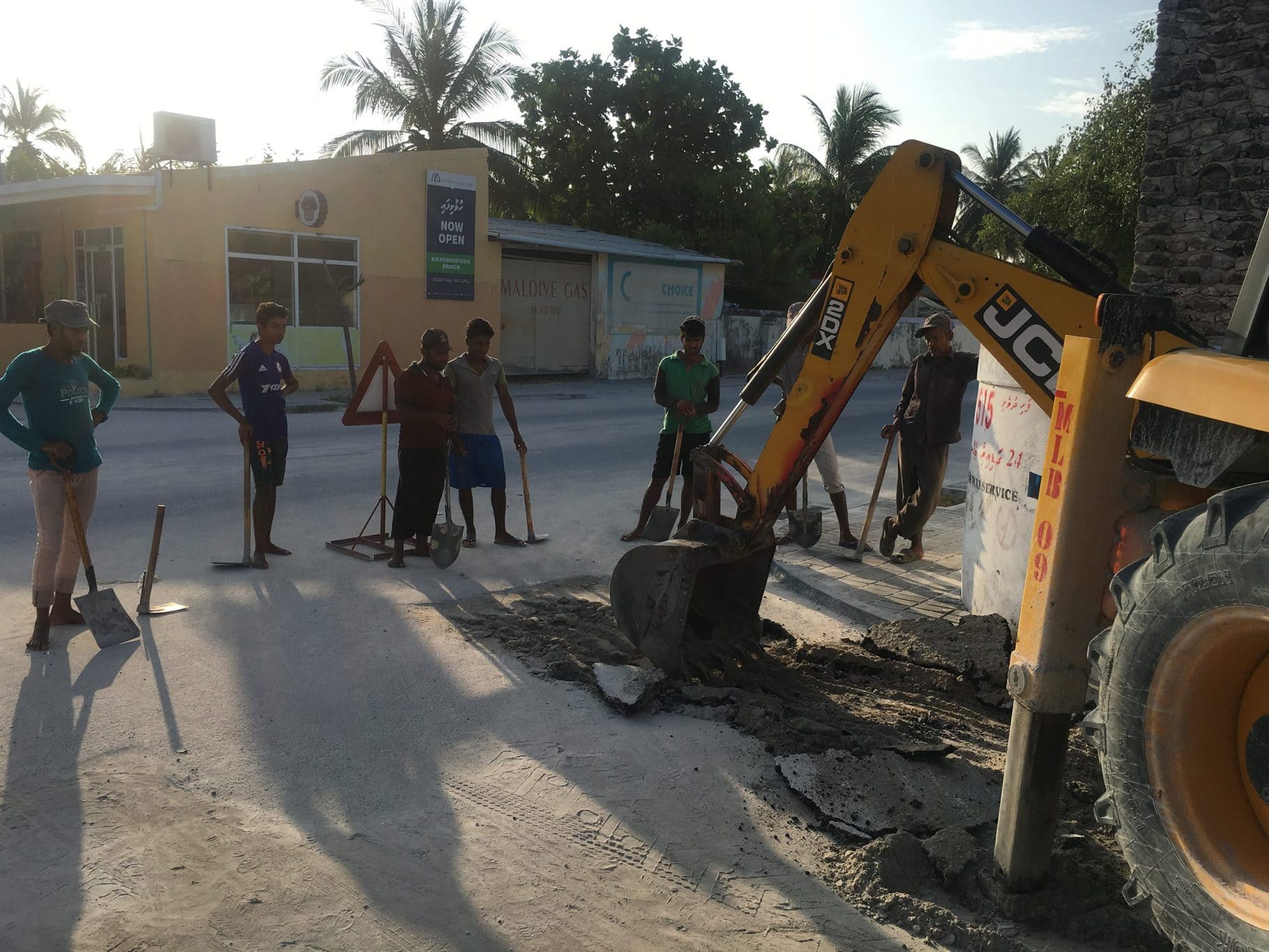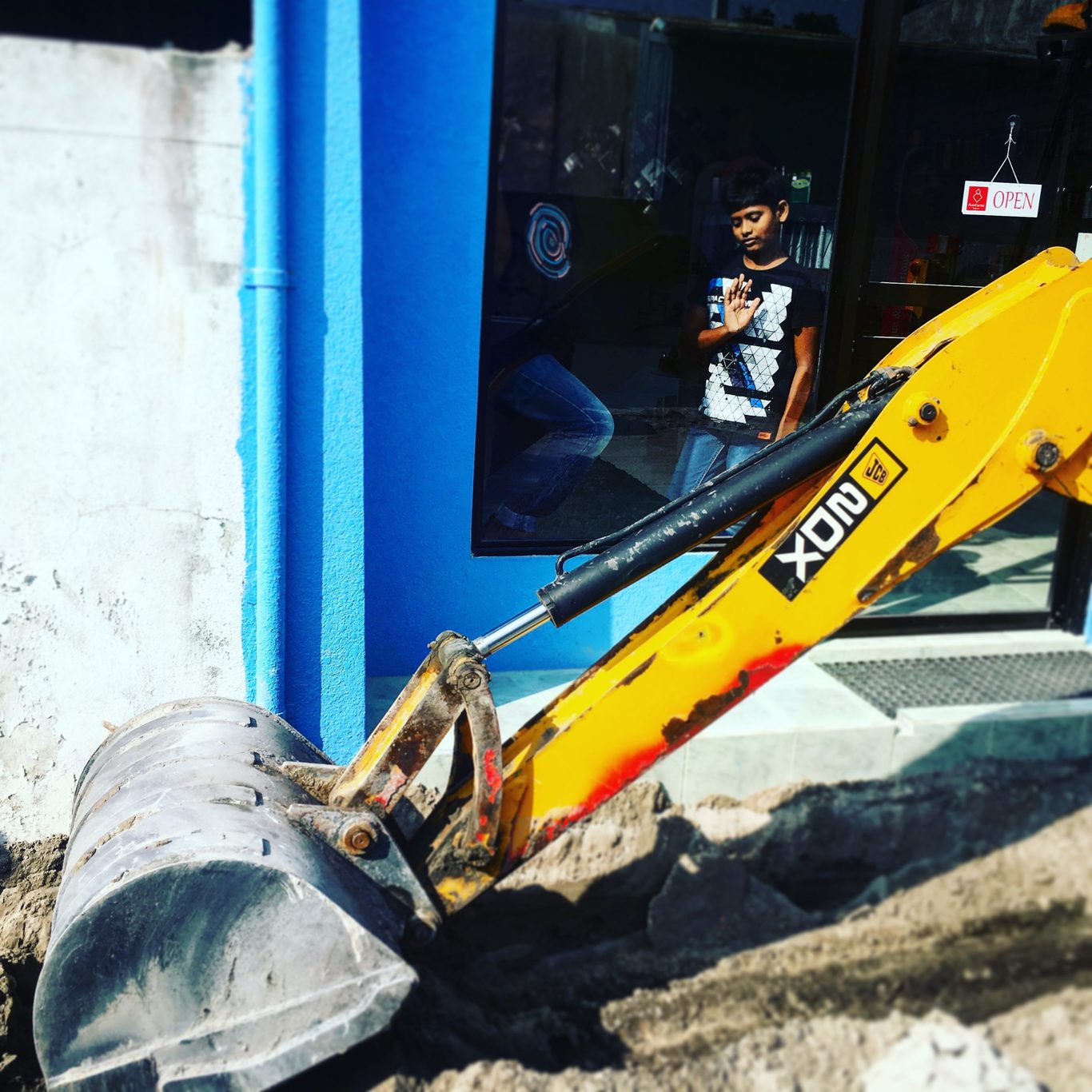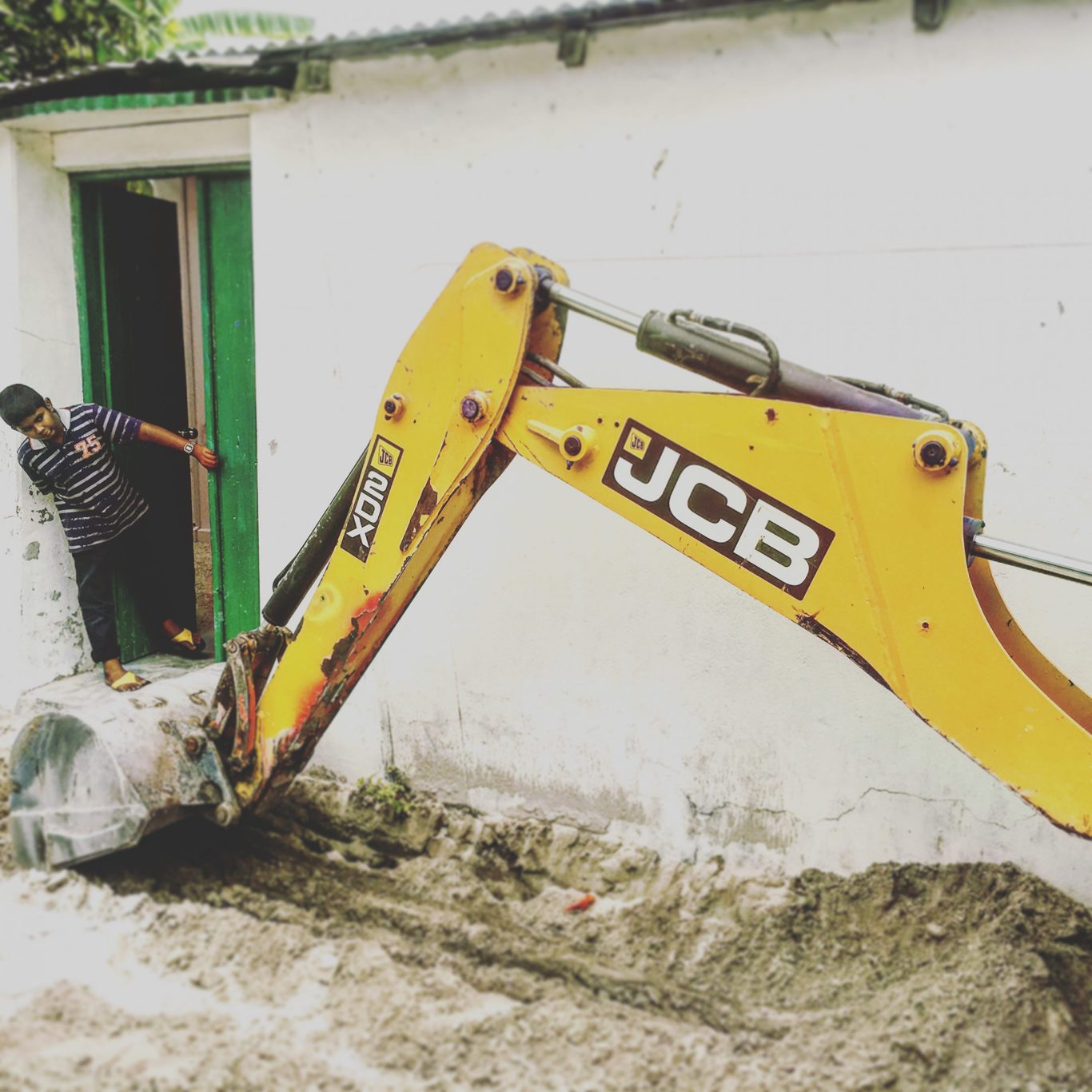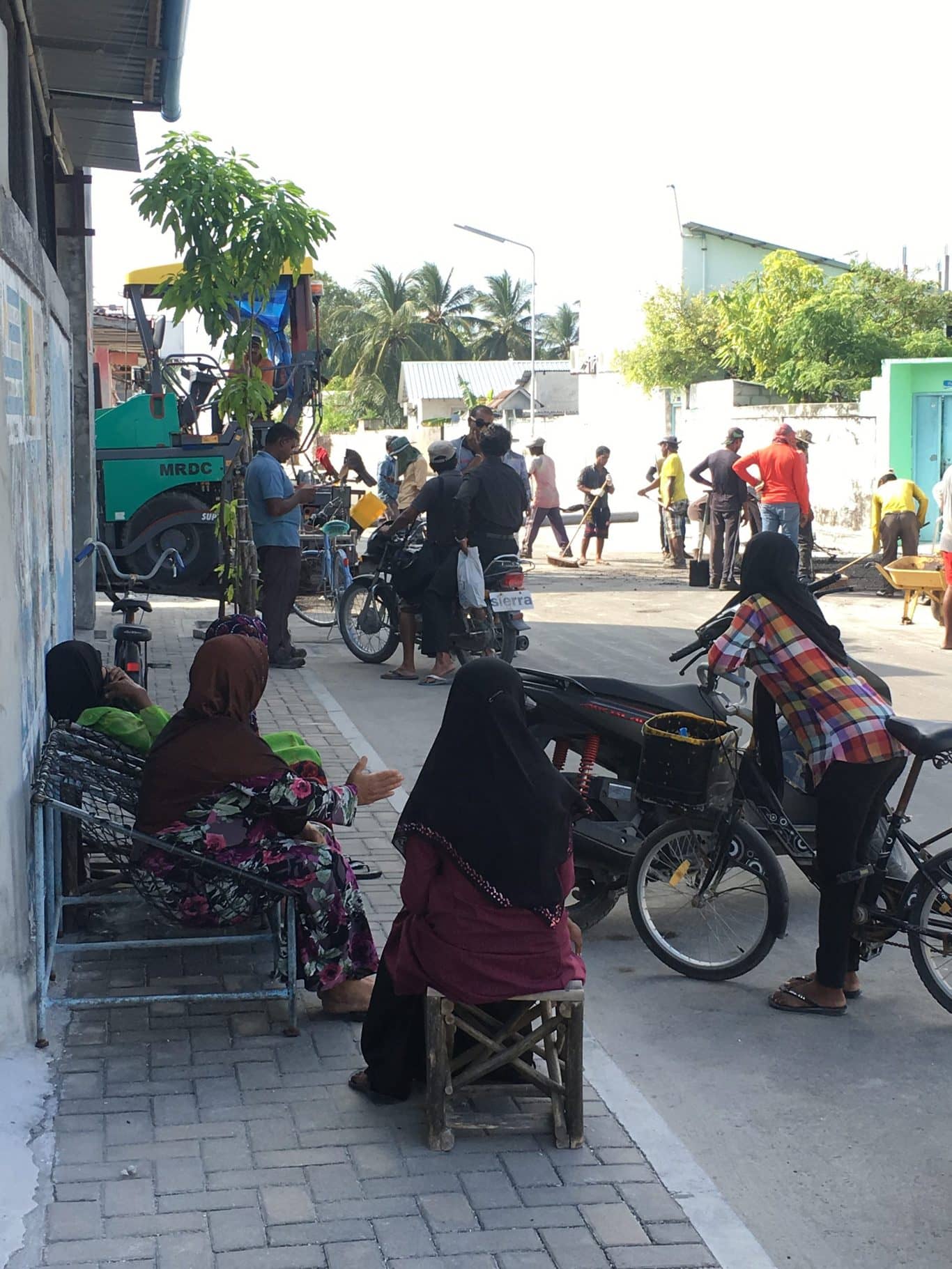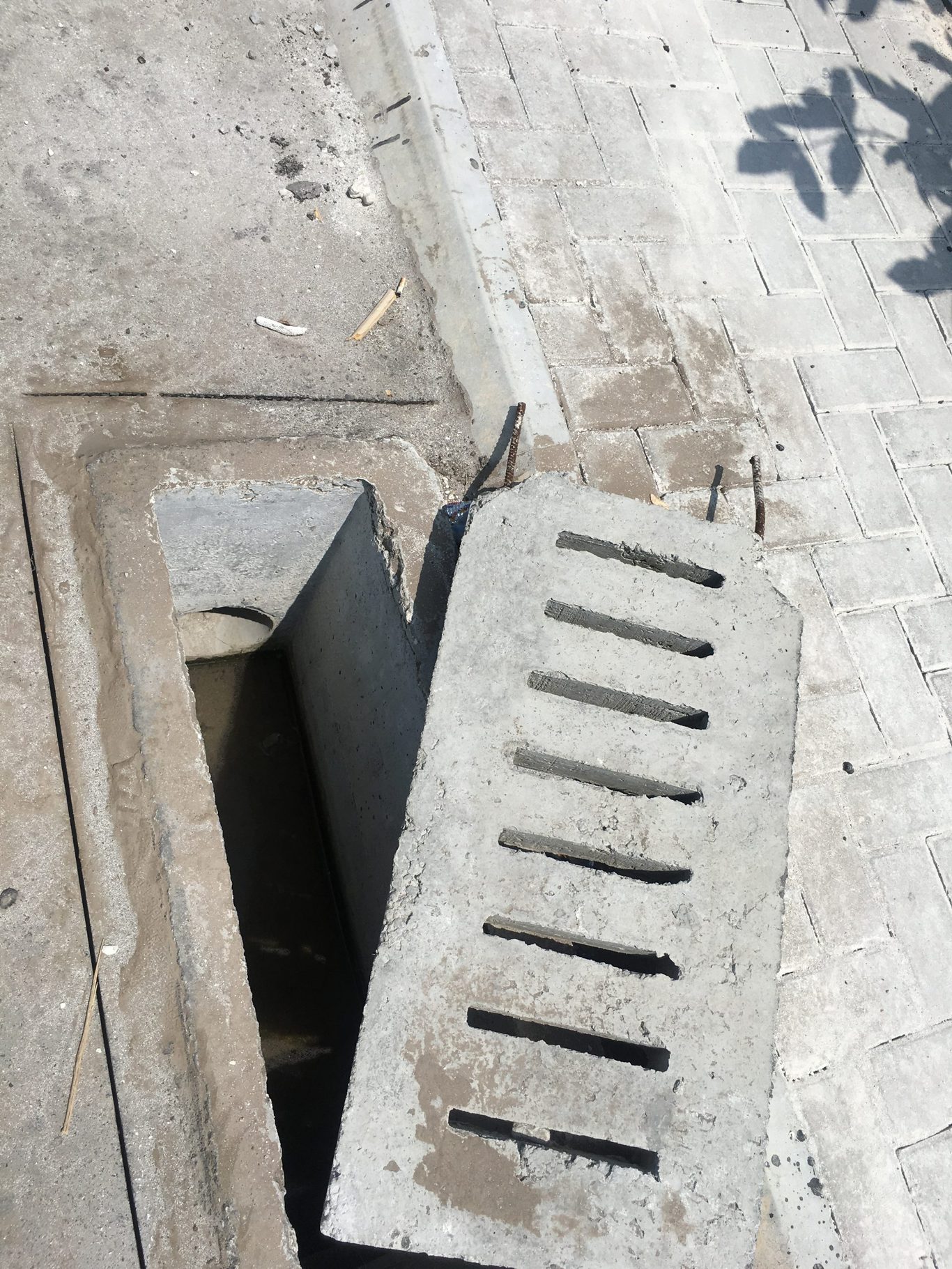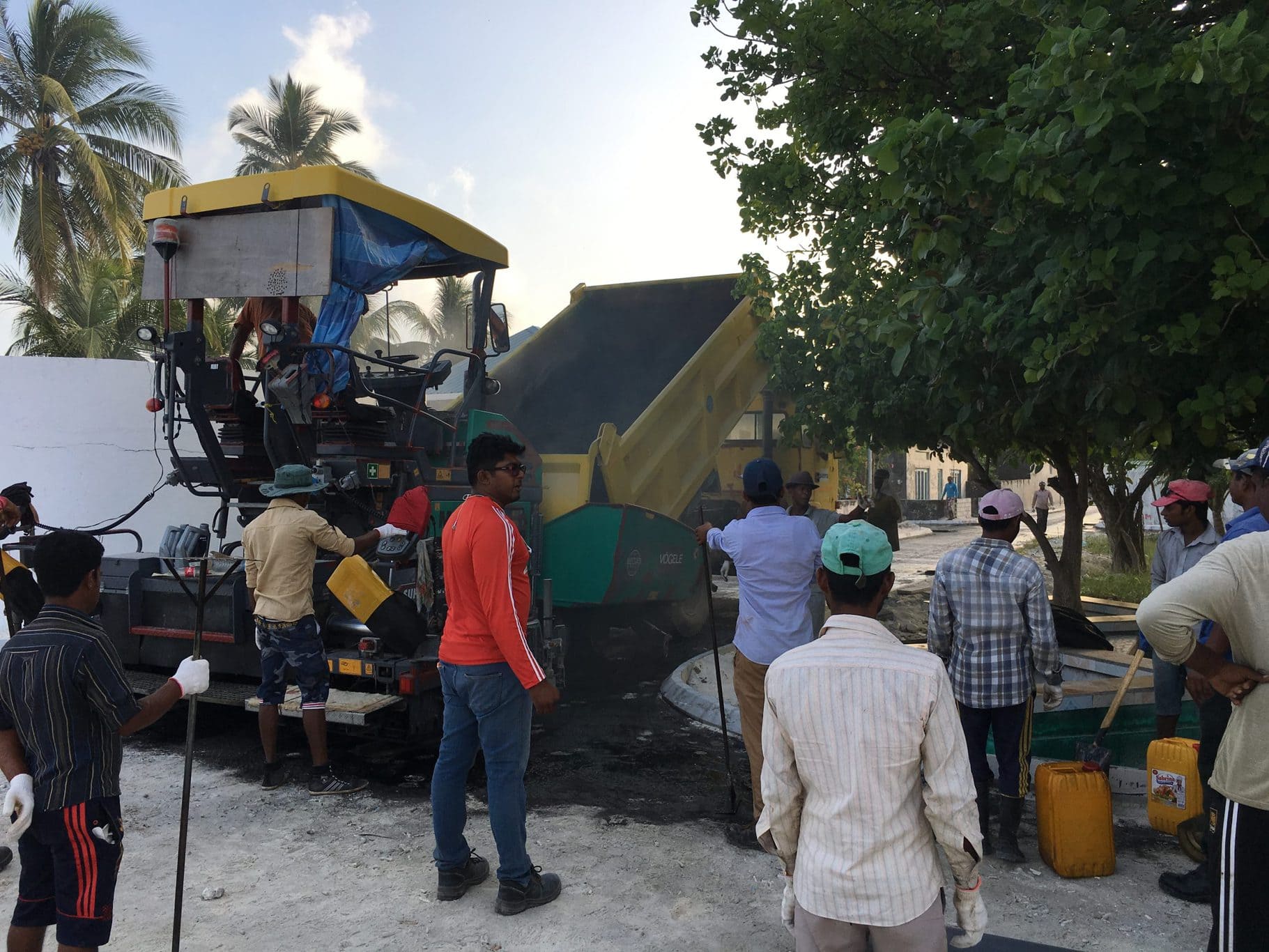Road building in the Maldives – an archipelago of small coralline islands – sounds a bit like a euphemism for a ridiculous task. Maldivian roads present uniquely closed circuits, as they loop around and cross-cut discrete islands on the Indian Ocean archipelago – a location better known not for its connectivity but for the appeal of its isolation. The Republic of Maldives comprises of around two thousand islands (Bell 1940), of which about two hundred are inhabited. Only three roads link up otherwise disconnected islands to form a continuous landscape. Additionally, of the 90,000 square kilometres of national territory of the Republic of Maldives, only three hundred square kilometres is recognised as land (Bremner 2016: 289). The ‘real road’, some would claim, should be considered as the water that surrounds the islands, with the series of ferry channels between the islands and the atolls as the public road network that the fragmented polity of the Maldives has never fully realised.
Instead, roads emerged as dominant as a concrete instantiation of modernity and development on the islands.
The common Divehi term for development, thara’gee, is a relatively new word, with thara said by some to derive from the English word tarmac. Thara’gee is thus explicitly linked with concrete or asphaltic manifestations of change on the islands (see Heslop and Jeffery, forthcoming).
Roadsides make heterogenous and culturally complex locations for an ethnography of work. For twelve months in the Maldives (April 2016-2017), I worked with a Sri Lankan construction team developing small island roads across the archipelago. The construction company was subcontracted to do the work of a state-owned enterprise called the Maldives Road Development Corporation (MRDC). I spent many days with the work crews on site, mixing and laying asphalt, or in the site office in the capital, Malé, drawing up costings for potential projects and observing outsourcing negotiations to local contractors for smaller parcels of work.
In the construction industry, the uneven insertion of migrant workers into the layered Maldivian labour market could be starkly observed: Bangladeshis labour under the sun with simple tools, Sri Lankans operate machinery in the shade and Maldivians work from air-conditioned offices. Rather than focus on the relationship between workers and the way in which skill and expertise are read at the roadside – about which I have written elsewhere (Heslop and Jeffery 2020), this short essay brings forth some ethnographic reflections on the suspicion of the state and development, a critical population, and the management of infrastructural expectations on an Indian Ocean archipelago.
Suspicion
Suspicions and rumours surrounding substandard work on the islands can be seen in the context of a historical imbalance of development on the archipelago. For many on the more remote islands, Malé is a template for Maldivian infrastructural achievement. However, the advanced status of Malé is also considered a product of a longstanding political project to keep other islands “further behind” – a view that imagines material development is withheld from particular islands, thus leaving them cut off from the infrastructure required to modernise. This view is held particularly strongly in the south of the archipelago. In the late 1950s, the southernmost atolls of Addu, Huvadhu and Fuvahmulah attempted to form a breakaway independent republic, called the United Suvadive Republic. This was quashed by the state under President Ibrahim Nasir, and over subsequent decades these atolls were thought to have been underfunded by the central government, stripped of resources, and cut off from a centralised political powerbase in Malé and the largesse of the state.
The sense that governments in power might enact some form of infrastructural revenge on islands in the Addu Atoll was commonplace; both as a result of historical dissent in the region and the sometimes spiteful character of infrastructure politicking that intensified with the arrival of multi-party electoral politics.
What infrastructural developments a government implemented could be quickly undone by an coming regime that subsequently replaced it. An acute awareness of historical neglect means any proffered infrastructural development is treated with suspicion that it is substandard vis-á-vis infrastructural developments elsewhere on the archipelago.
A broader distrust in the equality of development interventions on other islands is a more common source of suspicion and concern than the idea that an outsourced company is cutting corners for its own gain. However, the latter is not to be ruled out and contractors are, of course, not beyond scrutiny on the islands.
Complaints
When an island resident sees something that they do not like about a newly asphalted road – perhaps a small hole has appeared where a motorcycle stand has been stuck into the ground before the asphalt has had time to set, or perhaps a curb stone is cracked – there is a particular procedure of complaints. A picture of the damage will be taken on a phone and sent via the internet messaging service Viber direct to the local MP, if not the Ministry of Housing and Infrastructure Development. A call will then be made to the contractor’s head office in Malé, who will have to reassure the Ministry that work is being done with due diligence and that what has been reported will be taken care of. The national coordinator for the contractor will then tell the local MRDC office to reassure the people on the island from which the complaint originated that it will all be fixed before the contractor leaves. Contra the hierarchical channels of redress observed elsewhere in South Asian politicking, which often start with an appeal to the village head and then, if they are unable to help, a higher authority, the complaints procedure on islands where subcontracted roadwork takes place mainlines straight into political high office with remarkable effect.
The contractor cannot leave, or be paid in full, until all the work at a given site is completed. Complaints generally do not place the contractor of risk of losing the tender, these sorts of complaints are generally filed away as “political grievances” and regarded simply as the opposition party, who may have been against the roadwork in the first instance, causing trouble. Nevertheless, complaints are followed up, and action is often taken. The contractors will not want to be on the island for longer than they need; they certainly do not want to be held back with constantly maintaining the road. A small job, such as a cracked curb stone or a damaged drain cover, would ideally be left until the end when the team can tidy up any loose ends, sign off and go home.
If island residents continued to alert the contractor and the Ministry to damages in need of repair, the contractor would be stuck on site for much longer than is profitable. A loose drain cover is a typical example of the sort of job that contractors would find themselves reluctantly repairing again and again before being able to leave the island. This is also the sort of image that might be sent to the Ministry of Housing and Infrastructure Development.
Distrust towards a contracting company by island residents did not stem from the fact that the contractors were foreigners, or that they were implementing the development plans of government no longer in office, and potentially not one they supported in first instance, but rather that they might not be getting the same quality of roads as other islands.
Speculation about unequal development led to questions about the technicality of the process, and competency across the spectrum was interrogated.
As put to me by one Maldivian roadworks manager:
People are so suspicious… Now the first thing is, nobody knows about the technicality of the asphalt. What is it? To be honest even the Maldives Road Development Corporation Road and the Housing Ministry don’t have the capacity [read: knowledge]. The people in charge of the Ministry, and in charge of this project, they are also politicians, not “technical guys” (Fieldwork interview, Malé, 2017).
Expectations of the local populace regarding what should be built was largely based on what they had seen elsewhere on the archipelago, mainly via television and social media. While state media broadcast utopic animations of roads winding through a high-modernist island metropolis, this does not quite tally with the observable – relatively slow – progress of low-tech construction on the islands undertaken by Bangladeshi labour.
Where labour comes from matters. The perceived level of development of the countries from which workers originate also informs how the quality and competence of work is gauged.
The fabricated animations circulating on social media showing futuristic images of island infrastructure development may have sown seeds of distrust, concern, and suspicion among island residents that what was being done on their islands may not match what was being developed elsewhere, but this was coupled with reports and rumours of developments across the water, from those travelling between the islands and atolls. Speaking of a consultation with island residents, one road manager expressed his bewilderment that such comparisons are made across different atolls:
When we go to the islands, they compare this asphalt with concrete. They believe that it should be that hard, at the mixing and those things should be like concrete. And they might have seen some works in Addu [the southernmost atoll in the Maldives], that is the only place that they might have seen the asphalt works. And they might compare that with this one, and after that, Hulhumalé. Hulhumalé they have used ABC (aggregate base course) right? As a base layer. But the traffic in Hulhumalé is totally different, the mix ratio is totally different, so they are comparing this with this (Fieldwork interview, September 2018).
While the road manager felt the islanders were making ill-informed and unfair comparisons between different types of roads, it should be noted that these expectations were created in no small part by state propaganda. Nevertheless, the MRDC has faced continued criticism from island residents and local councils. As well as the quality and width of the road, negotiating which routes around the islands are most important to develop falls predictably into the sphere of parochial politics. At the same time, “local issues” can be readily absorbed into national-level politicking, finding relevance in disputes between the Ministry for Environment and the Ministry of Housing and Infrastructure Development – two ministries often at loggerheads as bureaucratic jurisdictions cross-cut in authorizing and implementing work. That the Ministry of Housing and Infrastructure ostensibly requires approval from the Ministry of Environment, by conducting an Environmental Impact Assessment (EIA) on all developments, was a source of friction between the two Ministries which could see the removal of a single tree rerouting a road.
Laying asphalt over the surface of a coralline island in the Indian Ocean led the same manager to declare, in despair:
“Forget the road. They just want something like a runway; a runway to the sky.”
At one level, this comment might reflect the road manager’s perception that islanders had overly grand expectations of the roads they would receive. At another, it captures the isolation of these projects and the closed circuit of connectivity that small island roads present. Here, as a “runway to the sky,” the expectations of the road might be read through the experiences and places island residents engage with in the process of bringing about a Maldivian thara’gee modernity.
To peruse all issues of Roadsides, visit the journal’s website: https://roadsides.net
References
Bell, H.C.P. 1940. The Máldive Islands: Monograph on the history, archaeology and epigraphy. Ceylon Government Press: Colombo.
Bremner, Lindsay. 2016. “Thinking Architecture with an Indian Ocean Aquapelago.” GeoHumanities 2 (2): 284–310. https://doi.org/10.1080/2373566X.2016.1234353
Heslop, Luke and Jeffery, Laura. 2020. “Roadwork: Expertise at Work Building Roads in the Maldives.” Journal of the Royal Anthropological Institute. DOI: 10.1111/1467-9655.13236.
Heslop, Luke and Jeffery, Laura. (forthcoming). “Encountering Chinese Development in the Indian Ocean: A case study from the Maldives.” In Highways and Hierarchies: Ethnographies of Mobility from the Himalaya to the Indian Ocean, edited by Luke Heslop and Galen Murton. Amsterdam: University of Amsterdam Press.
[1] The MRDC was replaced by the state-owned Road Development Corporation (RDC) by Presidential decree in June 2019.



